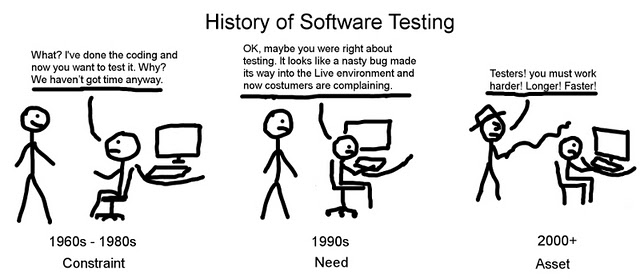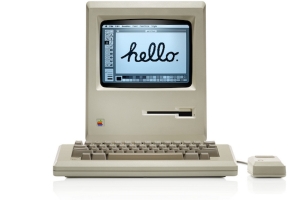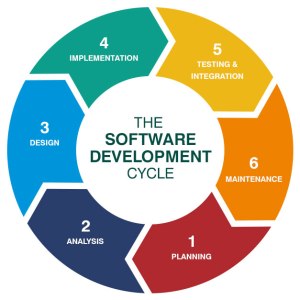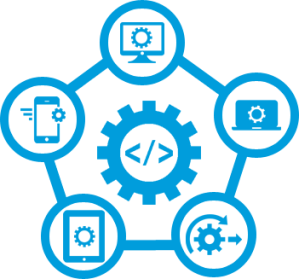
Estribar software ha cambiado y evolucionada durante los años y gracias a la gran velocidad de crecimiento de la computación esto ocasiona que la mayoría de los aparatos puedan tener una mayor cantidad de memoria para poder hacer tareas más complicadas a una mayor velocidad.
Todo comenzó en los años de 1950 donde las personas comenzaron a hacer programas con meros fines matemáticos para facilitar el trabajo de las personas, pero más adelante conforme crecían las capacidades de las computadoras esto ocasiono que los programas se fueran complicando y lo que comenzó siendo algo relativamente sencillo a primera instancia se transformó en algo que no todas las personas podían comprender.

Esto ocasiono que los programas al ser tan complicados fueran más lentos que sus contrapartes electrónicas y la mayoría de las personas no los querían usar por ese hecho. Al ver esto Dennis Ritchie creo Unix y C lo que ayudo a las personas a comprender los códigos y dar sintaxis al mismo, pero esto para los programadores de alto nivel era como un retraso.
Después donde comenzó a resaltar la programación fue gracias a los microchips porque se dieron cuenta que podías utilizarlos para guardar código y hacer que logren algo en un espacio pequeño, mientras crecían estos componentes es su capacidad también los programas comenzaron a crecer y esto creo una sinergia enorme entre estos dos elementos.



 After this, the BOOM of software development started. The 70’s saw the growth of interfaces, that allows the developer to break the project into pieces. Then the 80’s gave birth to the famous “object-oriented programming”, that changed the way a user interact with the computer, by the Graphical user interface (GUI); now the device was more
After this, the BOOM of software development started. The 70’s saw the growth of interfaces, that allows the developer to break the project into pieces. Then the 80’s gave birth to the famous “object-oriented programming”, that changed the way a user interact with the computer, by the Graphical user interface (GUI); now the device was more , but bad code writing
, but bad code writing .
.

